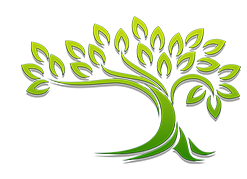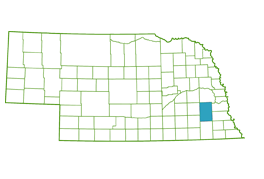|
|
Research Tips
Basic Genealogy
- Genealogy is the search for our ancestors. Family History is the study of the lives they led. Using the information from each discipline provides us with a true picture of our family.
- Remember that each generation doubles the number of ancestors. Focus on one or two families at first, the others will be there when you get to them. A generation is approximately 22-25 years for males and 18-23 years for a female.
- Focus equally on male and female lines.
- Remember to document all of your sources. Undocumented genealogy is mythology!
Census
- A census is an official count of the population living in a country on a designated day. These were usually done at specific intervals. The census places an ancestor in a specific place at a specific time.
- Prepare a census timeline before you begin. Work backward from the most recent census keeping track of what you find in each one. Copy the information as given-do not change or update the information you feel to be incorrect.
- United States census information begins with the first one taken in 1790. 1850 was the first census to give names for everyone in the household, not just the head. Most of the 1890 census was destroyed by fire. However, there are parts of it available on Ancestry. A good resource is William Dollarhide’s The Census Book: A Genealogist’s Guide to Federal Census Facts, Schedules and Indexes.
- Don’t assume that all children listed in the census belong to the wife listed. This may be a second wife. Vital records and wills can help sort out who belongs to who.
- In the United States, there are a number of special censuses: Slave, Industry & Manufacturing, Agriculture, Mortality, Social Statistics, Union Veterans and widows, and Defective, Dependent and Delinquent. Some states also took a census midway between the federal enumerations. State Census Records by Ann S. Lainhart is a good resource for locating these.
- A person may not have been living on the day the census was actually taken (not the official day). All information should be interpreted to be “as of the official census day.”
- When the head of the household is no longer listed, don’t assume he/she is dead. It is possible that the former head of the household might be living with a child or may have been away at the time of the enumeration.
- Soundex is a system of coding names for the U.S. census based on sound rather than alphabetical spelling. A variation called American Soundex was used in the 1930s for a retrospective analysis of the U.S. censuses from 1890 through 1920. A free Soundex converter is available on Rootsweb and several other genealogy sites.
Charts and Forms
- A pedigree chart is a diagram depicting your ancestry. Females should use their maiden names.
- Family Group sheets identify a couple and their children along with their vital information.
- Creating a timeline is a good way to put your ancestry in historical perspective. Begin with that person’s birth date and then fill in historical events along with events in the person’s life.
- The Research Log is very important for the time when you share your data or decide to publish your work. You will need to know your sources for each piece of information. Be very specific, giving author, title, publication date, page (s), repositories, and their locations.
- Use a Correspondence Log to record each piece of correspondence to include the name and address of person or institution you’re writing to, what is being requested, the date, and the outcome of the request. Follow up in a month if there has been no answer.
NOTE: These forms are often free at most public libraries and at our genealogy library.
Church Records & Cemeteries
- Church records may include births, baptisms, christenings, marriages, deaths, and burials. Be sure you have the correct religious denomination. If you’re not sure, search the churches near where your ancestors lived. Religious artifacts can also give clues. Some denominations have extensive archives which can be located on the internet. Historical societies often have old church records too.
- Check for cemetery records with the church. The Sexton’s office usually keeps this information. Larger municipal cemeteries have offices with detailed burial books for locating graves. Sites such as Find-a-Grave can also be helpful. Some families had private family plots which may be hard to locate. Check with the local historical society.
Evidence
- The direct evidence speaks to the point in question.
- Indirect evidence gives facts from which you can come to a conclusion.
- Primary evidence is personal testimony or a record created shortly after an event by a person with personal knowledge of the facts.
- Secondary evidence is copied or compiled from other sources written from memory long after the event has occurred.
NOTE: Some good sources are Elizabeth Shown Mills’ books on evidence.
Hometown Records
- City directories provide names and occupations of town residents as well as local business information for a particular city. This source also helps locate an ancestor in a place and time. Many public libraries and historical societies have collections of directories.
- Newspapers are great for locating obituaries, wedding and birth announcements, pre-nuptial events, anniversaries, and general information about your ancestor.
- Indexes can often be found at the newspaper, local library, genealogy society or historical society.
- Town and county histories can be invaluable to forming a picture of your ancestors in the time they lived. Local libraries can obtain copies of these through Inter-Library Loan. Ask your librarian for assistance.
Interviewing and Letter Writing
- Relatives can be a goldmine of information and should be interviewed. Use a prepared list of questions and a recording device. Local libraries often have books for the genealogist on interviewing.
- When writing for information, whether to an individual or institution, it is best to limit the number of items requested. Shorter letters get answered faster. Enclose a self-addressed stamped envelope, business size or larger, and when requesting photocopies, include around $5.00 to cover expenses.
Internet Research
- Join a mailing list or message board, such as those on Rootsweb, to place queries and look for other researchers on your families. Another good suggestion is the query boards on GenWeb.
- A portal site such as Cyndi's List is a great way to start researching on the internet. She covers a lot of topics and keeps the links up to date.
|
|



